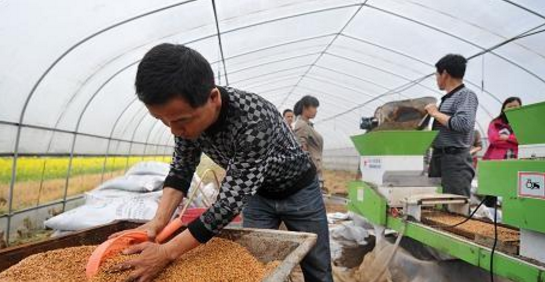The disease is caused by the seed infection as the initial infection source, and seed treatment is an important method to prevent and transmit diseases. The seed-borne diseases of rice in our city mainly include goblin disease and dry-point nematode disease. According to the recent test results of rice seed carrier rate, the rice seeding rate in this city is higher this year, and the prevalence risk of mite seedlings is relatively high. In order to ensure the safety of rice production in the whole city, it is hoped that all districts and counties will do a good job in seed disinfection treatment. Seed treatment technical advice.

Grasp the disinfection of rice seeds, control the disease transmission
First, the seed carrier situation
Recently, our center conducted a sampling test on the prevalence of fungal pathogens such as mite and seedlings in the rice varieties of the main rice varieties in our city this year. A total of 16 rice varieties and 97 samples were sampled. After laboratory testing, the average prevalence of sample seedling disease was 10.83% (11.11% last year), up to 22%; the average rate of other pathogenic fungi was 40.86% (39.56% last year), ranging from 18% to 64%. . The conventional rice varieties with a mild seedling disease rate are slightly higher than the hybrid rice varieties. The conventional rice varieties are Guangming No.1, Xiushui 121, Qingxiang soft glutinous rice, Nantun 9108, Jiaoyuanyou 69, Hanyou Xiangqing, Jinnongxiang The seedling rate of seedlings of 8 varieties such as 1267 and Huxiangjing 106 was relatively high, and the average carrier rates were 22%, 17.33%, 15.33%, 14%, 14%, 13%, 12%, 10.8%; The prevalence rates of hybrid rice varieties Huayou 14 and Qiuyou Jinfeng were 9.23% and 9.41%, respectively.
Second, seed treatment advice
(1) Agricultural measures
1. Selected seeds. Before planting, the rice seeds are screened to eliminate the glutinous rice, diseased valleys, and other impurities in the rice seeds.
2, drying seeds. Before soaking seeds, choose to sun-bak for 1 to 2 days to improve seed germination rate and disease resistance.
(2) pharmaceutical treatment
1. Pharmacy and dosage. Each 100 kg of seed is treated with 17% acaricidal acesulfame (bacteria) WP 1500-600 g to control rice blast disease. For the hybrid rice varieties such as Qiuyou Jinfeng and Huayou 14 which are susceptible to dry-tip nematode disease, another 6% of the killing Danshui agent (Shield Clear) is added 150-200 ml. At the same time, it is recommended to add 10% imidacloprid wettable powder to all varieties to prevent the seedling stage.
2, the processing method. First adjust the above agent with a small amount of water into a paste, then add 1.3-1.4 times the amount of water to the substrate, and evenly dilute; immerse the selected rice seeds in the prepared mixed liquid; turn them up and down several times. Stamped.
3. Soaking time. When the average daily temperature is 18 to 20 ° C, soaking seeds for 60 hours (three nights and two days), and soaking seeds for 48 hours at 23 to 25 ° C. For soaking seeds before the end of May, it is generally required to soak for 60 hours. The single-season late rice that has been planted in early June needs to be soaked for 48 hours. In July, the seeds should be soaked for 36 hours.
Third, matters needing attention
1. Dip the time to ensure the efficacy.
2. When soaking seeds, the container should be covered and placed in a cool and dark place.
3. After the rice seeds are soaked and disinfected, they do not need to be rinsed with water, and can be directly drained and germinated.
4. When soaking seeds in batches, in order to ensure the soaking effect, the soaking solution should be reconfigured for each batch of soaking, and the soaking solution should not be reused many times.
Contact: Mr. Ma
Phone: +86-0374-5699688
Tel: +86-0374-5699688
Email: [email protected]
Add: Fine Chemical Industry Park, Jianan District, Xuchang, Henan, China